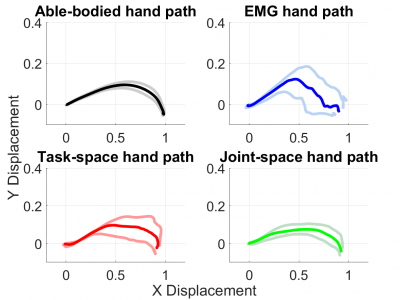Wearable Sensing
This repository introduces a novel dataset for the classification of Chronic Obstructive Pulmonary Disease (COPD) patients and Healthy Controls. The Exasens dataset includes demographic information on 4 groups of saliva samples (COPD-HC-Asthma-Infected) collected in the frame of a joint research project, Exasens (https://www.leibniz-healthtech.de/en/research/projects/bmbf-project-exasens/), at the Research Center Borstel, BioMaterialBank Nord (Borstel, Germany).
- Categories:
 2980 Views
2980 ViewsThis dataset provides the magneto-inertial signals from six MIMU (2 Xsens, 2 APDM, 2 Shimmer) and orientation from 8 reflective markers (VICON) at 3 different speeds (slow, medium, fast). Marker trajectories are provided. Proprietary orientations from MIMU vendors are also included. All data are synchronized at 100 Hz.
- Categories:
 1609 Views
1609 ViewsThis dataset consists of sensory data of digits, i.e., from 0 to 9. The dataset is collected from 20 volunteers by using a 9−axis Inertial Measurement Unit (IMU) equipped marker pen. The objective of this dataset is to design classification algorithms for recognizing a handwritten digit in real-time.
- Categories:
 2033 Views
2033 ViewsThe dataset comprises up to two weeks of activity data taken from the ankle and foot of 14 people without amputation and 17 people with lower limb amputation. Walking speed, cadence, and lengths of strides taken at and away from the home were considered in this study. Data collection came from two wearable sensors, one inertial measurement unit (IMU) placed on the top of the prosthetic or non-dominant foot, and one accelerometer placed on the same ankle. Location information was derived from GPS and labeled as ‘home’, ‘away’, or ‘unknown’. The dataset contains raw acce
- Categories:
 1467 Views
1467 ViewsFallAllD is a large open dataset of human falls and activities of daily living simulated by 15 participants. FallAllD consists of 26420 files collected using three data-loggers worn on the waist, wrist and neck of the subjects. Motion signals are captured using an accelerometer, gyroscope, magnetometer and barometer with efficient configurations that suit the potential applications e.g. fall detection, fall prevention and human activity recognition.
- Categories:
 7993 Views
7993 ViewsSynergistic prostheses enable the coordinated movement of the human-prosthetic arm, as required by activities of daily living. This is achieved by coupling the motion of the prosthesis to the human command, such as residual limb movement in motion-based interfaces. Previous studies demonstrated that developing human-prosthetic synergies in joint-space must consider individual motor behaviour and the intended task to be performed, requiring personalisation and task calibration.
- Categories:
 375 Views
375 Views
Ear-EEG recording collects brain signals from electrodes placed in the ear canal. Compared with existing scalp-EEG, ear-EEG is more wearable and user-comfortable compared with existing scalp-EEG.
- Categories:
 1868 Views
1868 ViewsThis dataset features cooking activities with recipes and gestures labeled. The data has been collected using two smartphones (right arm and left hip), two smartwatches (both wrists) and one motion capture system with 29 markers. There were 4 subjects who prepared 3 recipes (sandwich, fruit salad, cereal) 5 times each. The subjects followed a script for each recipe but acted as naturally as possible
- Categories:
 2076 Views
2076 Views






